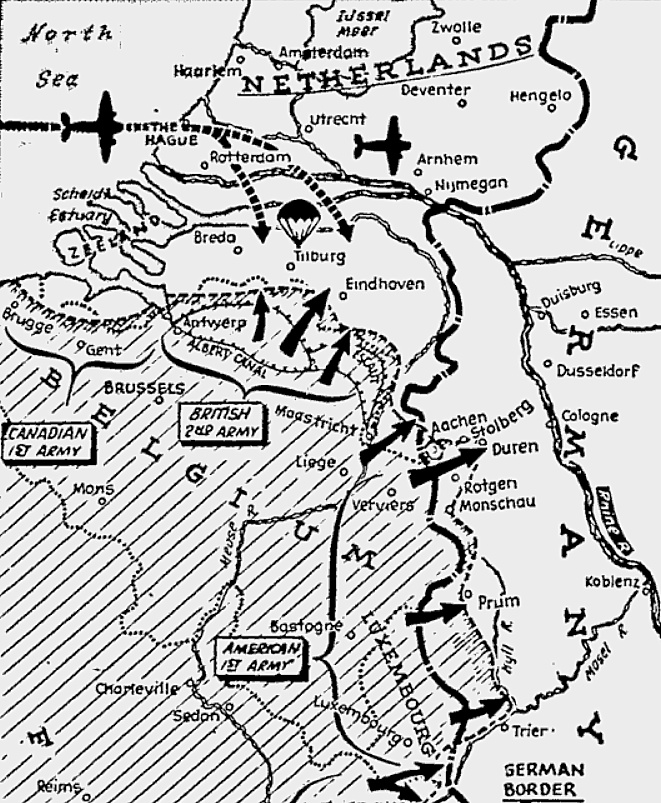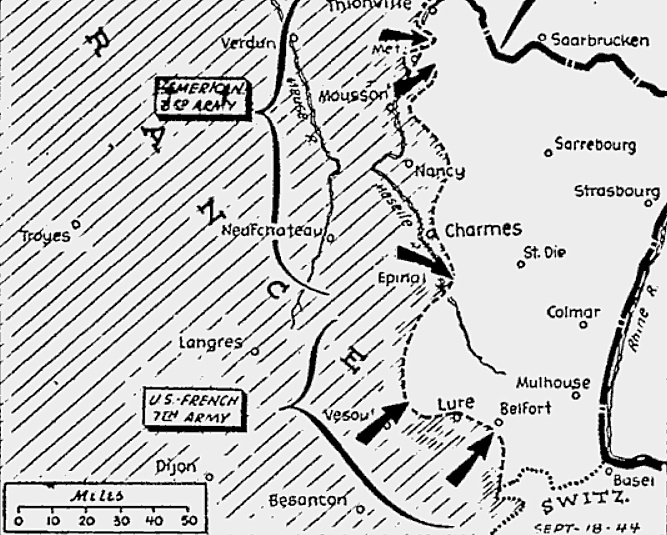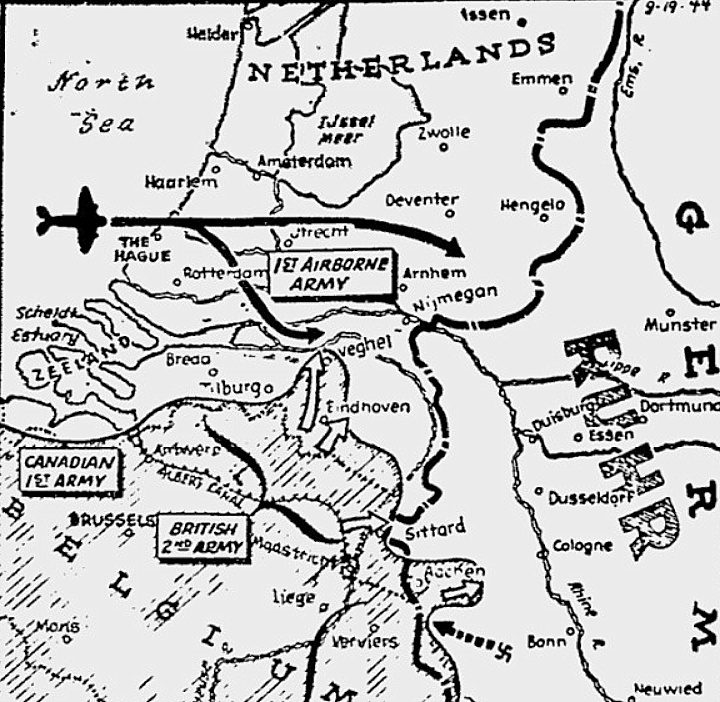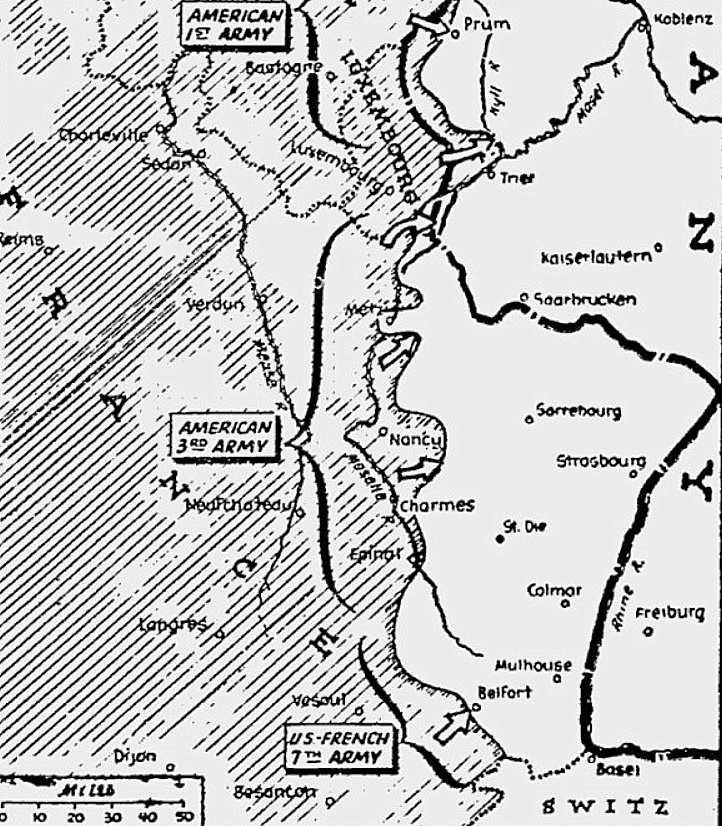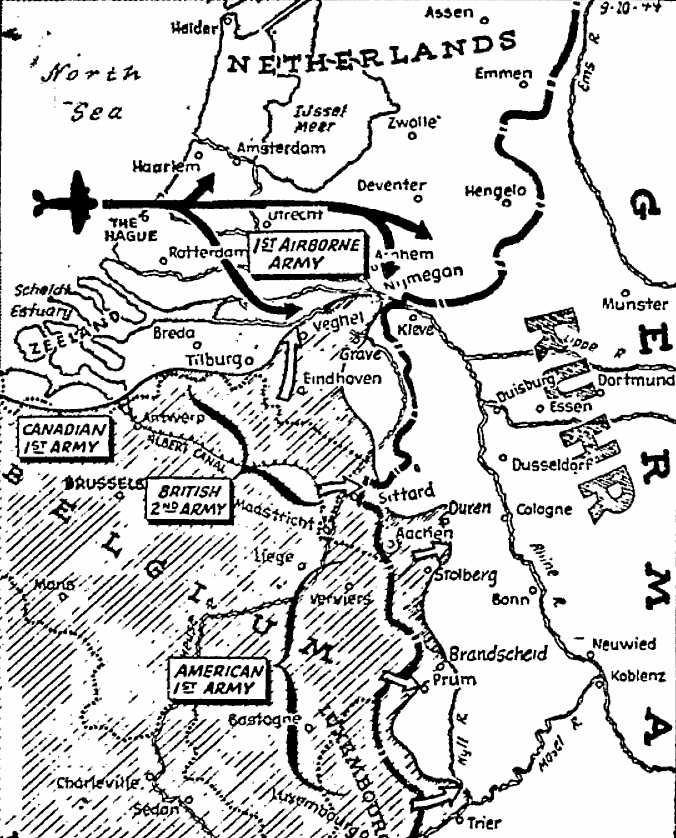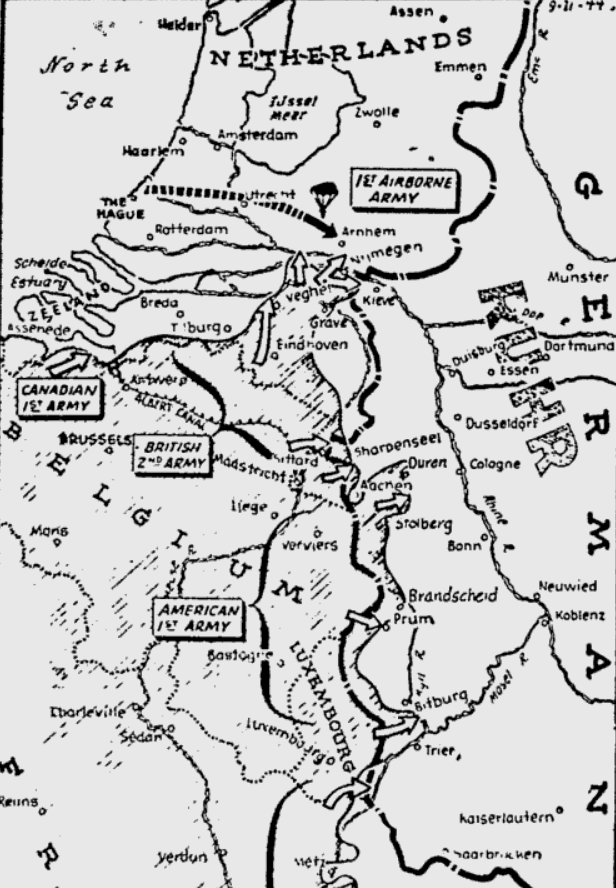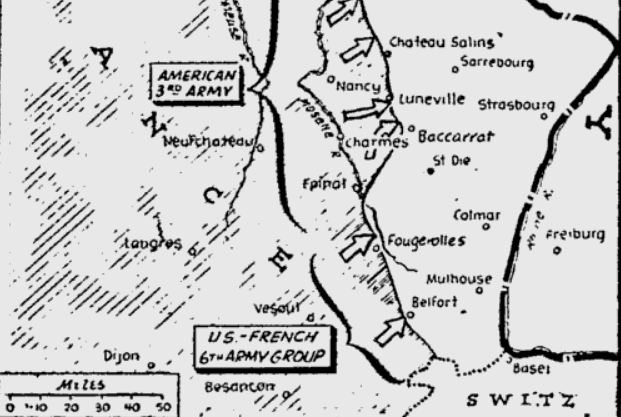Führer HQ (September 18, 1944)
Kommuniqué des Oberkommandos der Wehrmacht
Im holländischen Raum setzte der Feind gestern mittags nach vorausgegangenen starken Luftangriffen Fallschirmjäger und Luftlandetruppen hinter unserer Front mit Schwerpunkt im Raum von Arnheim, Nimwegen und Eindhoven ab. Am Nachmittag trat er dann zwischen Antwerpen und Maastricht zum Angriff an, um die Verbindung mit seinen abgesprungenen Verbänden herzustellen. Besonders im Raum von Neerpelt entwickelten sich dabei heftige Kämpfe, in deren Verlauf der Feind geringen Geländegewinn nach Norden erzielen konnte. Gegen die feindlichen Luftlandekräfte sind konzentrische Gegenangriffe angesetzt.
Zwischen Maastricht und Aachen sowie im Raum von Nancy stehen unsere Truppen weiterhin in schwerem Abwehrkampf mit starken feindlichen Kräften. In den übrigen Abschnitten der Westfront wurden zahlreiche schwächere Angriffe des Feindes zerschlagen.
In Lunéville eingedrungener Feind wurde geworfen. Südlich der Stadt ist unser Gegenangriff im guten Fortschreiten.
In den Trümmern von Brest behauptet sich die heldenhafte Besatzung, auf engem Raum zusammengedrängt, immer noch gegen schwerste feindliche Angriffe. Auch um die Festung Boulogne toben schwere Kämpfe. Hier konnte der Feind nach stundenlangen Luftangriffen von Westen her einen Einbruch erzielen, der abgeriegelt wurde. Gegen Dünkirchen geführte feindliche Angriffe scheiterten.
Das „V1“-Vergeltungsfeuer auf London wurde fortgesetzt.
An der italienischen Front blieben feindliche Angriffe im Abschnitt Lucca-Pistora erfolglos.
Unter starker Artillerie- und Luftwaffenunterstützung griff der Gegner den ganzen Tag über nördlich Florenz und an der adriatischen Küste in immer neuen Wellen an. In verlustreichen Kämpfen wurden alle seine Durchbruchsversuche vereitelt.
An der serbisch-bulgarischen Grenze kam es zu mehreren örtlichen Gefechten, in deren Verlauf zehn bulgarische Panzer abgeschossen wurden.
Im Südteil Siebenbürgens scheiterten auch gestern feindliche von Panzern unterstützte Angriffe. Ebenso wurden bei Sanok und Krosno erneute heftige Angriffe der Bolschewisten abgewiesen, Einbruchsstellen im Gegenangriff abgeriegelt.
In Lettland und Estland wird mit äußerster Härte gekämpft. Der Großangriff der Bolschewisten, der sich auch auf den Raum von Dorpat ausdehnte, wurde in schweren Kämpfen aufgefangen. Schlachtfliegerverbände unterstützten erfolgreich unsere Abwehrkämpfe im baltischen Raum. In der Nacht griffen Kampf- und Nachtschlachtflugzeuge sowjetische Truppenansammlungen mit guter Wirkung an. In Luftkämpfen und durch Flakartillerie wurden am gestrigen Tage 75 sowjetische Flugzeuge abgeschossen.
Auf dem Peipus-See versenkten Marineartillerieleichter ein sowjetisches Kanonenboot und beschädigten ein weiteres.
Nordamerikanische Bomber führten am gestrigen Tage einen Terrorangriff gegen Budapest.
In der Nacht warfen feindliche Flugzeuge Bomben auf Bremen, im Raum von Dortmund und auf Debrecen in Ungarn.
Supreme HQ Allied Expeditionary Force (September 18, 1944)
Communiqué No. 163
Allied airborne troops were landed in HOLLAND yesterday after powerful air preparation in which the Allied air forces operated in great strength. First reports show that the operation is going well.
Our ground forces near the BELGIAN-DUTCH frontier are continuing to make progress.
Further south, we have mopped up pockets of resistance on the outskirts of AACHEN. Heavy fighting continues in the city. Elements pushing on east of the town are encountering determined resistance. Advances have also been made across the LUXEMOURG-GERMAN frontier.
In the MOSELLE Valley, our troops are clearing the area west of the river of isolated enemy troops. North of NANCY, progress has been made and enemy counterattacks near PONT-À-MOUSSON were repulsed.
The Germans are fighting hard in the BELFORT GAP. Our troops have occupied the town of SAINT-LOUP-SUR-SEMOUSE and cleared LURE of the enemy. North of LURE, the enemy used tanks in resisting the advance. Local engagements took place in the area of PONT-DE-ROIDE.
Striking in advance of our airborne forces yesterday, heavy, light and fighter-bombers in very great strength attacked anti-aircraft batteries, gun positions, communications, troops and transport through a wide area of HOLLAND while fighters swept a path for the aerial transports and gliders, and provided umbrella cover for the landing. As the enemy’s guns opened fire, our fighters and fighter-bombers dived to silence them in low-level strafing and bombing attacks.
Many motor vehicles, locomotives, railway cars and barges were destroyed or damaged, and bridges and supply dumps were hit. According to reports so far received, nine enemy aircraft were shot down in combat by our fighters.
Later in the day, gun positions and troops on the island of WALCHEREN were attacked by a strong force of heavy bombers. Coastal aircraft struck at shipping off the FRISIAN Islands.
Fortified positions and garrison troops at BOULOGNE were bombarded for four hours by other heavy bombers which dropped more than 3,500 tons of high explosives. Intense anti-aircraft fire was encountered at time, but there was no opposition in the air.
Strongpoints at BREST were attacked during the day by small forces of fighter-bombers. Other fighter-bombers hit locomotives and railway cars in western GERMANY.
NOTE: NO CONTRIBUTIONS TO COMMUNIQUE RECEIVED FROM 21 AND 12 ARMY GROUPS.
White House Statement on the Entrance of Allied Troops into Holland
September 18, 1944
For four long years the Netherlands has suffered under the heel of German oppression. For four long years its liberties have been crushed, its homes destroyed, its people enslaved. But the spark of freedom could never be extinguished. It has always glowed in the hearts of the Netherlands people. It now emerges as an avenging flame.
The armies of liberation are flowing across the borders of Holland. A gallant Queen is returning to her gallant people. The Netherlands again stands on the threshold of her ancient liberties.
But the fight will not end with the restoration of freedom to Holland. It will not end with the inevitable defeat of Germany. The people of the Netherlands know, as the people of the United States know, that final victory cannot be achieved until Japan has likewise been vanquished.
Only then can peace and freedom return to the world.
